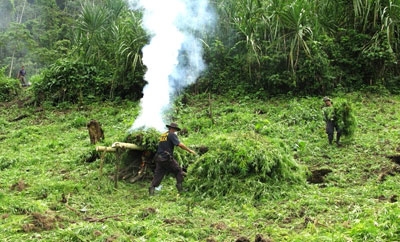The expansion of marijuana crops in one sector of Costa Rica highlights the government’s struggle to contain the drug trade in rural, isolated areas.
A feature by Costa Rican newspaper La Nacion explores how marijuana has become the principal crop of indigenous people living in the mountainous central region of Limon province. A reporter travelled to the region to see the crops firsthand with a group of national police who are now carrying out eradication efforts three times a year. Locals are reportedly more focused on planting strains of marijuana than traditional crops.
Around a million plants are estimated to have been destroyed so far this year, according to police sources. The crop is sold by growers for around $400 a sack and is sold within the country, typically in doses of five grams.
InSight Crime Analysis
The expansion of a marijuana economy in Limon points to the difficulties that state authorities face, when it comes to effectively governing remote parts of the country. Difficult-to-access areas — including the national parks — have attracted smugglers looking to move cocaine shipments northwards, and it now appears that Limon’s mountainous region has become a focal point for Costa Rica’s marijuana trade.
As the only country in Central America without an army, Costa Rica faces the challenge of confronting drug production and trafficking with more limited resources. Both the country’s president and the US State Department have said Costa Rica is ill-prepared to tackle the drug trade.
In recent years, Costa Rica has become an important stop-off point for drug traffickers moving cocaine shipments from South America to the United States. Drugs exports leaving the Central American nation now reportedly go to 39 different destinations on four continents, and there are indications the country has become a base of operations for Mexican and Colombian traffickers.

